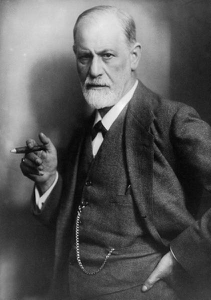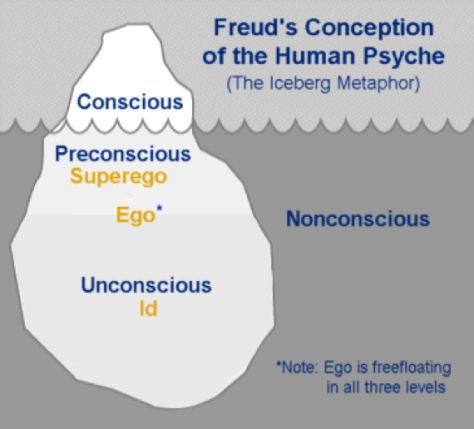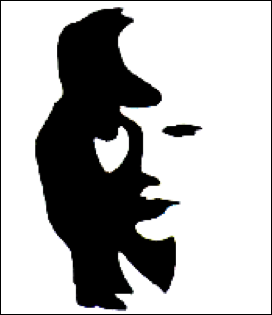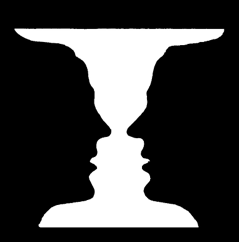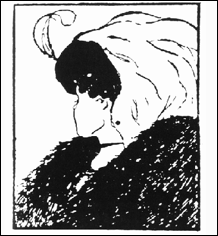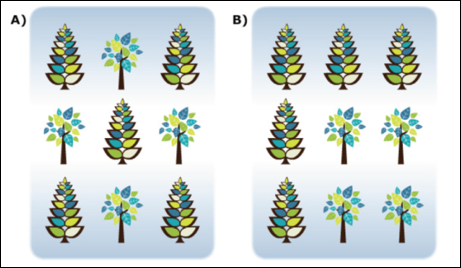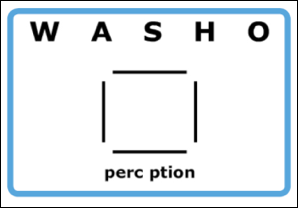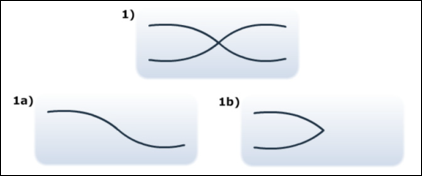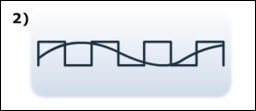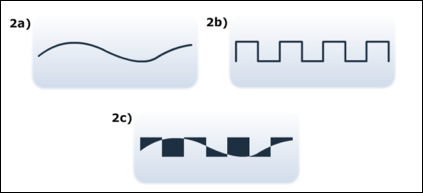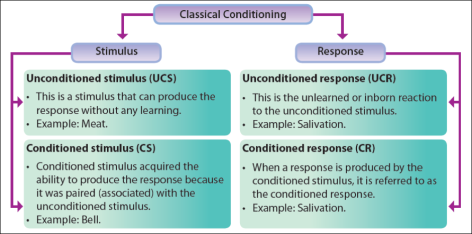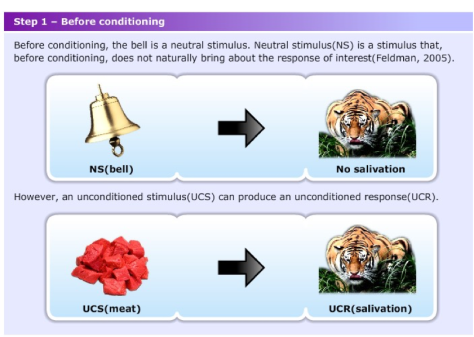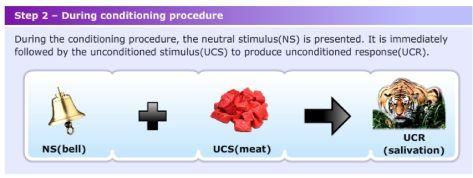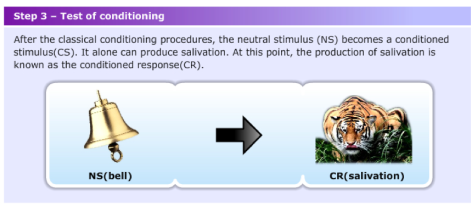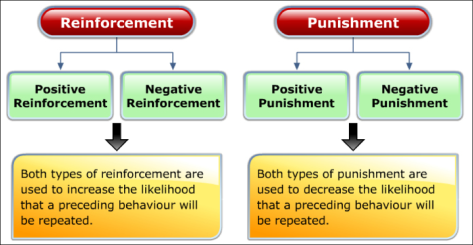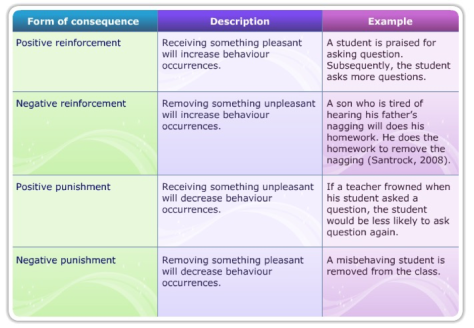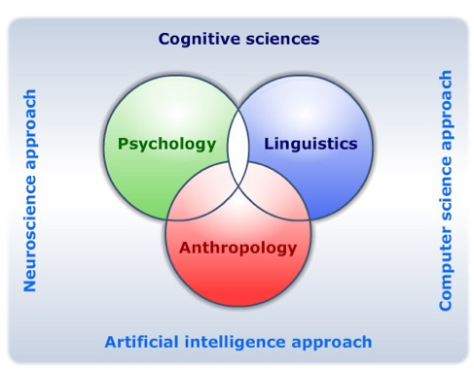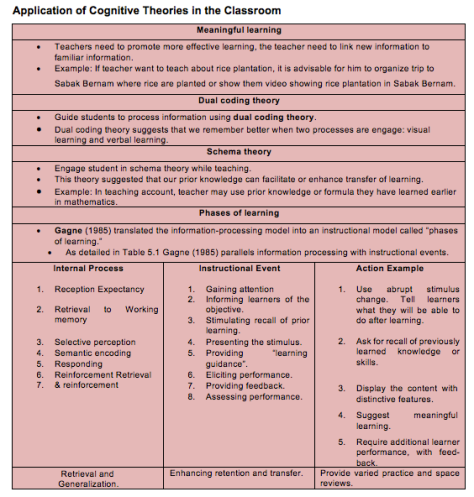Learning Outcomes
Upon the completion of this lesson, you should be able to:
- Understand the Viktor Lowenfeld Creative and Mental Growth
- Understand the Torrance Tests of Creative Thinking (TTCT)
- Understand the Calvin W. Taylor Creative Theory
INTRODUCTION
According to Webster’s Dictionary, the definition of creativity is artistic or intellectual inventiveness. Creativity is marked by the ability or power to create or bring into existence, to invest with a new form, to produce through imaginative skill, to make or bring into existence something new. When you create something, you are actually bringing it into being, making it from nothing. But how do you make something from nothing? How do you achieve creativity? What is the essence of creativity?
Creativity comes in many forms. It can be scientific creativity, resulting in inventions or medical cures. It can be artistic or musical, resulting in beautiful paintings, sculptures or operas and songs. It can be creative writing, resulting in novels, short stories and poems. Creativity can even be as simple as arts and crafts, such as needle arts, yarn crafts, and woodcrafts – things you create with your own two hands.
The important thing to remember is that creativity includes generating the idea or concept, as well as applying that idea and producing or manifesting the end product or result. Creativity or imagination is an integral part of being human and separates us from the animal world. Carl R. Rogers said, “The very essence of the creative is its novelty, and hence we have no standard by which to judge it.”
Craft (2000b), Starko (2001) and Cropley (2001) all make reference to early systematic study of creativity in the twentieth century in four areas:
- Psychoanalytic – Cropley (2001) summarises the psychoanalytic take on creativity as: Primary process thinking, seen to be below consciousness, not restricted by reality and where novelty is generated. Secondary thinking takes the form of the conscious, rational and logical and is the root of the ego which inhibits novelty. To gain access to the novelty a person must admit it into consciousness by ‘biphasic’ thinking which works by exploring primary thinking and making it acceptable to secondary thinking. Psychoanalytic theory has not developed a particular theory of creativity in education, however this perspective has been influential in shaping new theories of creativity in education such as Craft (2000) who cites Assagioli (1974) rooted in the ideas of Jung and Freud.
- Humanist – both Starko (2001) and Craft (2000) discuss the works of Maslow (1987) and Rogers (1954). The key to humanist enquiry into creativity for Maslow was self actualisation, the creative person acting in harmony with their inner needs and potentialities. For Rogers, there were three inner conditions of creativity: openness to experience, an internal locus of evaluation and the ability to toy with elements and concepts. Both of these theorists continue to be highly influential today, with Maslow’s (1987) work also playing a role within Craft’s (2000) theory.
- Behaviourist – Craft (2000) uses Skinner as the most famous example of this approach. Where it was considered, creativity was conceptualised as part of theory which saw actions as the result of responses to specific stimuli. This approach to researching creativity is rarely applied today.
- Cognitive – Craft (2000) and Cropley (2001) note that in the early twentieth century, this tradition was sparked by Galton’s work on genius. It was not until Guilford’s (1950) conceptualisation of divergent thinking that creativity itself came under the investigation of the early cognitive psychologists. This was part of Guilford’s Structure of Intellect model, which was a reaction against ‘g’, the idea that there is a single measurable unit of intelligence. Guilford identified components of divergent thinking that are still considered to be key in current creativity research, for example flexibility and originality (Starko, 2001).
- From the 1950’s, research focused increasingly on the cognitive approach with investigations also developing into the role of personality in creativity and the stimulation of creativity, all of which are still active research areas today (Craft, 2000). By the end of the twentieth century the social systems approach had also gained support. These different approaches are considered next.
Viktor Lowenfeld Creative and Mental Growth
Viktor Lowenfeld was an art educator, artist, psychologist, author, and professor at Pennsylvania State University, and is famous for his works about child development and growth relating to art and creativity. Lowenfeld was born in Linz, Austria in 1903. He taught at elementary schools in Vienna as he was attending University in Vienna for art history and psychology, and Vienna Academy of Fine Arts, in which was where Lowenfeld studied under Edward Steinberg, whom required his students to work with ceramic sculptures while blindfolded.
All students, not just those who were artistically talented, were encouraged by Lowenfeld to have their creative abilities unfold over time. His focus was on creative self-expression as a form of individual personality and identity formation as well as development of relationships with others. In any art program, interactions between art teachers and students were of prime importance. Little teacher intervention was required or expected in the early stages as students built skills though their own experiences with materials. As students became older, some direct teacher intervention became important for conveying knowledge and understandings about art making and the art world.
In Lowenfeld’s schema, creative and mental growth took place in hierarchical stages that included social, emotional, perceptual, intellectual, aesthetic, and creative components. All children passed through the same stages in the same ways at more or less the same ages. Emphasis was on students’ own experiences with modest regard to affects of a student’s culture or the influence of other cultures including contemporary culture. According to Lowenfeld, it was only at adolescence that social influences played a role in creative development.
These stages are only guides to help us understand more about child art development and are not a rigid definitive tool for the classroom. Age appropriate art programming will build upon the child’s abilities as they grow. Where an art program may provide a product the process to achieve this product should always be of prime importance, thus the knowledge of children’s artistic development is most important in order to reach children’s greatest creative potential.
Each child is an individual so should be the art expression.
Developmental Stages:
- The Scribbling Stage ages 2-4
- The Pre-schematic Stage ages 4-7
- The Schematic Stage ages 7-9
- The Dawning Realism Stage ages 9-11
- The Pseudo-Naturalistic Stage ages 11-13
1) The Scribbling Stage ages 2-4
The first scribbles will be random marks. The child gains satisfaction for here there is active involvement in self-expression outside of crying. The average child starts scribbling around the age of two. The child is experiencing pure pleasure from the haphazard marks. The range and variety of scribbles is very great and relates to the child’s own development and experiences in his environment.
Disordered Scribbling
During this stage the marks on the paper can go in many directions. Where the child is drawing (on a table or floor) and the crayon size will influence the direction. The size of the scribbles shown on the paper is relative to the size of the child. At some point the child will discover that there is some relation to his motions and the marks on the paper. This may occur six months or so after the child starts scribbling. Enjoyment of this activity encourages the child to repeat and vary his motions. This helps in the development of motor coordination and feelings of mastering a new task.
Naming the Scribbles
A parent may not recognize scribbles as anything, but by around the age of 3 1/2 to 4 the child begins naming scribbles. He has begun thinking in terms of pictures. Before this stage he was satisfied with the motions themselves, the activity was purely kinesthetic. In the naming scribbling stage the child connects the motions with the world around him. He is beginning to think in terms of pictures or symbols. Naming of scribbles shows that the child is ordering his thinking into symbols or a “schema”.
Motivation
At no point should a child be inhibited, criticized or corrected while creating art during any stage of his development. Usually in the first stages of scribbling no special motivation is needed except to provide the child with the proper materials and the encouragement to go ahead with the activity.
The child’s own experiences are fertile topics that can motivate and excite them in art activities. Class field trips, stories from books, personal experiences etc. should be discussed before an art lesson to help the child to draw from his own vision, and thus enjoy and learn during the art lesson.
Art Materials
The best materials for this stage are simple and easy to manipulate, fat black crayons or markers, 11 “x 18” (or smaller) white paper, white chalk on black paper or a chalkboard. I do not recommend the use of finger paints for children of any age. Children do not learn to use tools, in this case a paintbrush, nor does finger paint encourage the manipulation of paint. The finger paint distracts the children from the painting process, while they soil everything within their reach, the painting activity is forgotten.
Paints should be thick tempera or poster paints with large white paper and round medium sized brushes. Play dough, or easy to form modelling clay are wonderful in the development of fine and gross motor coordination. Occasional use of collage materials from random shapes (NOT PRECUT SHAPES) can add fun and involvement in cutting and pasting. Stencils can be useful if limited to the child manipulating and learning how to use the stencil.
Allow the children to cut their own shapes using safety scissors. They will derive pure enjoyment from this activity and show great pride in their achievement. Cutting with scissors can involve a child completely in his discovery in the use of a tool. A child’s fine motor coordination can develop rapidly through the mastery of cutting paper. Some children will not possess the gross motor coordination to even hold a pair of scissors, however tearing paper into shapes can fulfil the child’s need to manipulate paper into shapes of his own design.
2) First Representational Attempts: The Pre-schematic Stage 4-7 years
A different mode of drawing has begun- the conscious creation of form. From the disordered scribbling, to naming the scribbles now the child has developed a way to represent form. In scribbling the child was mainly interested in kinaesthetic activity, now he is involved in representing the world around him.
A child’s first representational attempts grow directly from symbols the child was using during the scribbling stage. The circles and longitudinal lines will come together to form a person. Usually the child’s first representational symbol is a man. The man is typically drawn with a circle for a head and two vertical lines as arms legs or a body. At this stage a child is constantly searching for new concepts, so while the “man” is always of primary importance form that may change many times.
The constant searching for new concepts will continue until about age 7. By this time the individual pattern or “schema” will begin to appear. The child is involved in discovering his own patterns, which will at times translate into direct and immediate representations of places and events. A child’s feelings can have profound effect upon his art creation. The more stimulating a child’s experiences the more dramatic and exciting his artwork will be. The child discovers there is a relationship between his drawings and his outside experiences
The child in the pre-schematic stage is developing understanding of spatial relationships. The child may always appear in the center of the picture, while objects seem to float around in space. This is because the child is just learning to perceive his place in the world around him. The size of objects in a child’s picture may appear very different than what they are in reality. This is because the child places important objects larger on the picture then unimportant objects. For example, very large hands are common among children when they are drawing pictures of themselves involved in a hands-on activity
Motivation
Any motivation at this stage should start with the child himself. The child must feel art to be an important stimulating experience. A child should become involved in and identified with his art experiences. Become involved with the children but let them work on their own level, and in their own way. Be sure that you find meaning and excitement in the art experience, with lots of encouragement and positive energy for the children.
Materials
Since the child at this age is excited by his ability to represent what is meaningful to him, any art experience should provide the opportunity for developing mastery of the material itself. Since the process of creation is more important than the product an art material should be selected that meets the needs of the age group for which it was planned. Constantly changing materials or using cute things in an art project can undermine the integrity of the child’s artistic expressions. Good quality crayons on 12″X18″ white paper, thick tempera or poster paint with a round medium sized bristle brush, clay, markers, collage materials, are all excellent art materials for this age group.
3) The Achievement of Form and Concept: The Schematic Stage. 7-9
The importance of the schema can only be fully realized when we understand the child’s desire for a definite symbol, or schema of a real object. Although any drawing could be called a schema, here we will refer to schema as a concept which a child arrives at which he repeats again and again when no intentional experience influences him. These concepts are highly individualized. For some children they may be very intricate while for others the schema may be a simplified symbol. The schemas are as varied as the children themselves are. The schema of an object is the concept at which the child has finally arrived, and it represents the child’s active knowledge of the object.
At about age seven the drawing of a human figure should be a recognizable symbol. Usually all body parts are apparent and clothing, even fashions are present. Facial features are represented from very simple to the inclusion of eyelashes, earrings and various details. Hands and feet become important in the human form, but are not always present in every drawing. Sometimes ovals, triangles, squares circles, rectangles, or irregular shapes are used as schema for the body, although all kinds of shapes can represent aspects of a human figure.
In the human schema the child is not attempting to copy a visual form. The child arrives at a concept by a combination of many factors, his awareness of his own feelings, and his development of perceptual sensitivities. The child’s human schema can give us a clue as to the development of the individual.
Another schema that becomes apparent at this point in a child’s development is the “space schema”. The child finds new relationships between himself and other objects. No longer do objects seem to float around in space in a child’s artwork. Now there is a “baseline” on which all objects in the child’s schema will be placed. The “base line”, is just that, a line placed on the bottom of the paper by the child, on top of which everything is drawn.
At the schematic stage of development the child has not developed an awareness of the representation of a three dimensional quality of space. We find that the schema is usually a representation of two dimensions. The biggest discovery is that there is a definite order in spatial relationships. The space schema is entirely abstract and has only an indirect connection with nature, as adults know it. Another interesting visual way a child represents objects is to show the insides of the objects as X-ray pictures. He depicts the inside of a building or structure simultaneously with the outside. A child may even draw the insides of a human while showing the outside and the space around the man.
Motivation
Motivation at this stage must create an atmosphere in which the child’s consciousness of being a part of the environment is stimulated. In the same way we need to stimulate a greater awareness of the actions and functions of the human figure. The inclusion of actions in an orderly space concept will be of greatest significance. Our motivation could be characterized by the words: we, action, and where.
It is important in any motivation that each child is personally involved. There should be a wide range of topics so a child has the opportunity to identify with his own particular interests: “Playing at Recess with My Class”, “Playing Ball with My Friends”, “Visiting the Zoo with My Family”.
Materials
Materials used by children at this stage should be the same as those used in previous stages, with the addition of printing weaving and perhaps “found objects” sculpture materials.
4) The Dawning- Realism: 9-11 years
One of the outstanding characteristics of this stage is that the child realizes he is part of a society—a society of peers. This is the stage where children are learning to work with groups of other children and cooperate much as they will in adult life. The discovery of sharing similar interests, secrets, and the pleasure of doing things together, are all very fundamental. There is a growing awareness that one can do more in a group than alone. This age is the time of groups or gangs. The word gang is not used negatively here. The reference is towards hanging out with friends in groups. This age shows an increasing interest in “social independence” from adult interference, learning about social structures in a personal way.
At this age the child is becoming more aware and sensitive to his environment. He is becoming more critical of himself and others. He may hide his drawings from inquisitive adults who may make some remark about their efforts. Studies have shown that there is a surprising similarity between drawings by children of this age and the drawings of untrained adults.
Children of this age have a strong desire to produce naturalistic or photographically real pictures. Although their experiences have much do with their artistic expression they are easily frustrated if their work does not appear the way they think it should. Be patient with children at this age, they are their own worst critics; adult interference can only cause more frustration in the child.
The schema is no longer adequate to represent the human figure during the gang age. The concept of the human figure as expressed during the schematic stage will give way to differentiation between male and female and much more detail will appear. This is the stage when the base lines will no longer sufficiently express their understanding of the world. The change from single base line to the discovery of the plane is usually a rapid one. We also find that the sky line is no longer drawn across the top of the page but now extends all the way down to the horizon. He has not yet developed a conscious visual perception of depth, but he has taken the first steps toward such awareness. The child will begin overlapping objects to show their relationship to one another in space.
At this stage the child is becoming sensitive to the qualities of a material. It is of great importance, that children be given the opportunity to improvise independently. There is a greater ability to use tools and multi-media materials. The emphasis should be on the process of manipulating and exploring the material and not upon achieving a “nice looking” finished product. Boys and girls will also have a preference of materials that they want to work with. Ask them what they are interested in working with. Provide enough variety to involve all of the children in a creative enjoyable art activity.
Motivation
Motivation during this period must stress the newly discovered social independence in order to give the child a feeling of self-esteem. An art experience must give him an opportunity to express the growing awareness of self, and to satisfy a new curiosity for the environment. It must also inspire the child to use the newly found methods of group cooperation as beneficial means for achieving results. Group projects are best suited to this age group. Many experiences can motivate a group of children to work on a cooperative project. Allow the children to provide some direction as to their interest as individuals and in group situations
Materials
Some of the materials the child has used during previous stages of development can seem “babyish” to the gang age child. The child now has greater control over the art materials so will prefer a variety of materials which will enable him to become familiar with new ways to combine materials. If the child has experience in the use of basic art materials, then he will find new ways to express his ideas and show his mastery of the medium. Respect for the child’s personal expression is very important at this stage, for art can be a valuable medium for the child to express how he feels about himself, and his environment.
Now the child is ready to put his thoughts and ideas, feelings and reactions into a visual expressive form. Craft work can lend itself to this child’s need to explore new materials and fulfil their desires to make things. Care should be taken when choosing craft materials for a children’s art program. Many craft projects are “busy work” which require little creativity and are not fulfilling the child’s need to “do their own thing.” A selection of wood, papier-mâché, cloth, buttons, lace, cardboard, boxes; straws, colored paper, etc. can be saved and made available to the children.
The ability to break away from the schema and to recognize particular details connected with the self and with the environment is on of the characteristic of this age. Children between ages 9-11 are more observant of their environment and their interest in nature can be seen in their collection of things. They see things through their own experiences, and assume this reality is the way things really are. We can see that naturalism is not the ultimate goal of this age, because there is usually no attempt to show natural colors, light effects, folds of cloth etc. There should be no value judgment placed on a child’s artwork. At this age the child and his peers pass on plenty of value judgments about one another’s work. An adult only need recognize the sincerity vested in the work.
5) The Pseudo-Naturalistic Stage, the Stage of Reasoning: 11-13 Years
The pseudo-naturalistic stage of development is very different than any of the previous stages. Because we are mainly concerned with elementary art development we will briefly cover this stage. This is the period of a child’s development termed, preadolescent. It is a time for seeking greater independence form adults. There is more awareness than ever of the human figure and the differences between boys and girls. A preadolescent is no longer a child but not yet an adult, thus the term child no longer applies. There is more interest in following the “crowd” and establishing his place in society. The preadolescent also has developed a strong sense of social awareness and the beginnings of a half-understood and not entirely welcome change in status.
During this stage, for the first time, the attention has to be shifted from the importance of the working process to an increased emphasis on the final product. The final product becomes more significant with increasing age. The pre-adolescent has a critical awareness toward their imaginative activity; many times they lose their spontaneous creative ability. An active, stimulating art program is necessary to keep students involved in the creative process.
The human figure takes on a predominant role in the preadolescent’s artwork. A motivating, rewarding art lesson is live model drawing. Students can take turns being the model, thus feeling a sense of cooperation and togetherness with classmates. Murals are excellent for working in groups and learning appreciation for the skills and ideas of others.
Motivation
Any art motivation should stress the individual’s own contribution. At this stage of development it is important to reinforce individualistic thinking. An art program that is primarily concerned with productions may miss entirely one of the basic reasons for the existence of art in a school program, that is, the personal involvement of an individual and the opportunity for a depth of self-expression.
Materials
All of the materials, which the child has used during each stage of development, are appropriate at this stage. The difference is that now the way the child uses the materials will change. Technical proficiency has improved enough that the child will find new ways to use these materials. More sophisticated materials can now be introduced such as, water colors, oil paints, drafting supplies and rulers.
Torrance Tests of Creative Thinking (TTCT)
Building on J.P. Guilford’s work and created by Ellis Paul Torrance, the Torrance Tests of Creative Thinking (TTCT), a test of creativity, originally involved simple tests of divergent thinking and other problem-solving skills, which were scored on four scales:
- Fluency. The total number of interpretable, meaningful, and relevant ideas generated in response to the stimulus.
- Flexibility. The number of different categories of relevant responses.
- Originality. The statistical rarity of the responses.
- Elaboration. The amount of detail in the responses.
The third edition of the TTCT in 1984 eliminated the Flexibility scale from the figural test, but added Resistance to Premature Closure (based on Gestalt Psychology) and Abstractness of Titles as two new criterion referenced scores on the figural. Torrance called the new scoring procedure Streamlined Scoring. With the five norm-referenced measures that he now had (fluency, originality, abstractness of titles, elaboration and resistance to premature closure), he added 13 criterion referenced measures which include: emotional expressiveness, story-telling articulateness, movement or actions, expressiveness of titles, syntheses of incomplete figures, synthesis of lines, of circles, unusual visualization, extending or breaking boundaries, humor, richness of imagery, colourfulness of imagery, and fantasy.
To date, several longitudinal studies have been conducted to follow up the elementary school-aged students who were first administered the Torrance Tests in 1958 in Minnesota. There was a 22-year follow-up, a 40-year follow-up, and a 50 year follow-up.
Torrance (1962) grouped the different subtests of the Minnesota Tests of Creative Thinking (MTCT) into three categories.
- Verbal tasks using verbal stimuli
- Verbal tasks using non-verbal stimuli
- Non-verbal tasks
The TTCT has two parts:
- TTCT-Verbal.
- TTCT-Figural.
- TTCT-Verbal consists of five tasks: ask-and-guess, product improvement, unusual uses, unusual questions and just suppose.
Activities 1-3: Ask-and-Guess
One of the clearest and most straightforward models of important elements in the creative thinking process is demonstrated in the Ask-and-Guess activities. It is included in the battery in order to give subjects an opportunity to express their curiosity and to measure their ability to develop hypotheses and think in terms of possible. In developing the various forms of this test, it has seemed to me that much of the essence of creative thinking, especially creative scientific thinking, is captured in the process of asking and guessing.
The Ask-and-Guess activities are divided into three parts or activities: Asking, Guessing Causes, and Guessing Consequences. Activity 1, Ask, reveals the subject’s ability to become sensitive to what is unknown because the questions asked are those that cannot be answered by simply looking at the picture.
Activity 2: Guessing Causes, and Activity 3,
Guessing Consequences
It should first be noted that Western scientific thought has long divided the phenomena of nature into two series: causal conditions, and the results or consequences of these conditions. Developmental psychology, however, has apparently been more concerned with the development of causal thinking than about thinking of consequences or possible. This does not mean, however, that psychology has been uninterested in the human ability to predict behavior. The ability of the clinician to predict human behavior, for example, has received considerable attention.
Activity 4: Product Improvement Activity
Product Improvement has always been one of the most dependable measures. It is a complex task with a high degree of face validity. It almost always makes good sense to teachers, parents, business people. They are able to recognize what they consider to be a desirable type of thinking. The activity is also attractive from the standpoint of administration and scoring. To most subjects at all age levels, it is an interesting task. It permits them to “regress in the service of the ego” and enables them to develop ideas that they would not dare express in more serious tasks.
Activity 5: Unusual Uses Activity
Unusual Uses, in Verbal Form A (Cardboard Boxes) and in Form B (Tin Cans), are fairly direct modifications of Guilford’s Brick Uses Test. After preliminary tryout with a variety of stimuli, the author decided to substitute tin cans and cardboard boxes, since bricks are less available for children to use in their play, and in their constructive and experimental activities.
Activity 7: Just Suppose Activity
Just Suppose is an adaptation of the consequences type test in Guilford’s battery, and is a variation of the Guessing Consequences Activity of the Ask -and-Guess activities. This variation was designed in an attempt to elicit a higher degree of fantasy and to be more effective with children. The subject is confronted with an improbable situation and is asked to predict the possible outcomes. In order to respond productively to this task, the subject must “play with” the possibility and imagine all of the things that could happen as a consequence. This kind of thinking seems to be highly important in creative behavior, but many individuals are unable to entertain such possibilities, even to this extent, and find such tasks intolerable.
- TTCT-Figural consists of three tasks: picture construction, picture completion and repeated figures of lines or circles.
In picture construction, participants are given a pear or jellybean shape and they must make a picture out of the shape. In the picture completion task and the repeated task, participants are given 10 incomplete pictures of figures in which they must construct an image of picture.
Drawing skills or abilities are not important. Instead, psychologists rate the pictures of the six factors listed above. The abstractness of titles, for example, seeks to measure abstract thought by rating how far the title of images move away forms concrete labelling. And resistance to premature closure seeks to measure open-minded thinking. A psychologist administers the test which takes 90 minutes. The final score is called creativity quotient of CQ. While IQs score reflect the recall of facts (or finding the one right answer to each question) CQ reflect the ability to come up with innovative, original, and novel thoughts, ideas and images. Proponents of both tests say that having both IQ and CQ scores for all students and adults helps educators, vocational counsellors and clinical psychologists develop comprehensive profiles for all abilities and all talent levels.
Rationale of the Torrance Tests of Creative Thinking Figural Activities
Although a variety of figural tasks have been developed, the standardized batteries consist of three activities, each designed to tap somewhat different aspects of creative functioning. These differences are ref1ected to some extent in the activity instructions. This triad of test activities in a sense represents at least three different creative tendencies. The Picture Construction Activity sets in motion the tendency toward finding a purpose for something that has no definite purpose and to elaborate so that a purpose is developed. The Picture Completion Activity calls into play the tendency toward structuring and integrating and gives an opportunity for in-depth presentation of a single object, scene, or situation. This activity creates tension in the beholder, who must control this tension long enough to make the mental leap necessary to get away from the obvious and commonplace. Failure to delay gratification usually results in the premature closure of the incomplete figures and an obvious or commonplace response. The invitation to make the drawing tell a story is designed to motivate elaboration and further filling in of gaps in information. In the Lines and Circles Activities, the repetition of Guiding Creative Talent, Making the single stimulus requires an ability to return to the stimulus again and again, perceiving it differently each time, disrupting structure in order to create something new.
Calvin W. Taylor Creative Theory
Calvin W. Taylor is a psychologist who believes not all men are born and blessed with the same talent. He believes that an individual talent development depends on an educator’s ability to stimulate student thinking. In his theory “Multiple Creative Talent”, he explained that the formation of talent should be in line with the learning activities carried out in the classroom. Taylor also suggested five types of creativity to show the difference in an individual creative process. The types of creativity are:
(A) Expressive Creativity
Creativity is an expressive thought that often occur randomly and independently. It can be seen through children’s spontaneous drawing. The majority of paintings produced by children at this stage are free and according to their perception. The result of the painting also depends on the ability according to age and development of the children’s physical condition. At this stage, the painting is in the form of scribble and uncontrolled lines. The expressive creativity in this situation is independent and skill, originality and quality are not considered important by the students during the process of making the piece.
(B) Technical Creativity
Creativity through the production process refers to the efficiency and capability of a student in creating an artwork. In this stage, teachers should assist students to improve their existing skills. At present the role of educators is very important because students need guidance to identify methods and approaches that are proper and appropriate in the process of creating a good artwork.
(C) Inventive Creativity
Inventive creativity is referring to the individual’s ability to create new things or objects through experimentation process. At this stage the main emphasis is on new discovery and invention. It also involves an individual attempts to produce a theory, formula and conclusion from the experiment conducted. The role of educators at this stage is to encourage and support so that students will not easily give up.
(D) Innovative Creativity
Innovative creativity is a stage involves modification of the existing idea basic concepts to new ideas. At this stage, students begin to do the modification and reinventing with their own style and technique. Educators will assist and guide the students to identify the correct method to be practised. At this point, students have started to act outside the conventional norm and they will create an alternative method when planning to produce an artwork.
(E) Imaginative Creativity
Imaginative creativity is very important and crucial. At this stage the formal principles of art is transformed to abstract and simplicity. For example, a human figure depicted will be produced without considering the details.




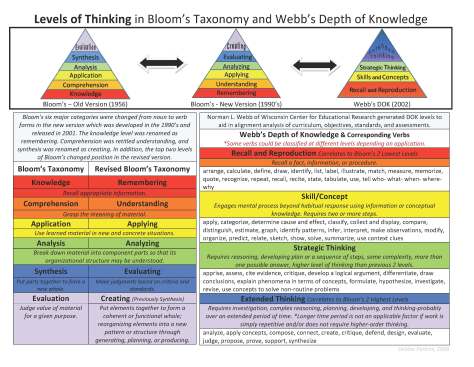 The Common Core Standards are the cornerstones of the Smarter Balanced and PARCC assessments, Webb’s Depth of Knowledge (scale of cognitive demand) and Blooms Revised Taxonomy (levels of intellectual ability) are the framework and the structures that will be used to evaluate students. Assessing curriculum, developing formative assessments, evaluation curriculum, and evaluation of students knowledge at the highest levels is being shared by two progressive cognitive matrices. Depth of knowledge, and complexity of knowledge is the heart of the more rigorous assessments being implemented in 2014. They share many ideas and concepts yet are different in level of cognitive demand, level of difficulty, complexity of verbs vs. depth of thinking required, and the scale of cognitive demand. Teachers need to learn how the frameworks are used to develop curriculum and how to use them to enhance instructions. Teachers and students can use Blooms Questions Stems and Webb’s DOK questions stems to create higher order thinking and improve achievement. 80% of the PARCC assessments will be based on the highest levels of blooms and the deepest levels of Webb’s DOK. Are you ready to use the DOK or Blooms daily in your class?
The Common Core Standards are the cornerstones of the Smarter Balanced and PARCC assessments, Webb’s Depth of Knowledge (scale of cognitive demand) and Blooms Revised Taxonomy (levels of intellectual ability) are the framework and the structures that will be used to evaluate students. Assessing curriculum, developing formative assessments, evaluation curriculum, and evaluation of students knowledge at the highest levels is being shared by two progressive cognitive matrices. Depth of knowledge, and complexity of knowledge is the heart of the more rigorous assessments being implemented in 2014. They share many ideas and concepts yet are different in level of cognitive demand, level of difficulty, complexity of verbs vs. depth of thinking required, and the scale of cognitive demand. Teachers need to learn how the frameworks are used to develop curriculum and how to use them to enhance instructions. Teachers and students can use Blooms Questions Stems and Webb’s DOK questions stems to create higher order thinking and improve achievement. 80% of the PARCC assessments will be based on the highest levels of blooms and the deepest levels of Webb’s DOK. Are you ready to use the DOK or Blooms daily in your class?